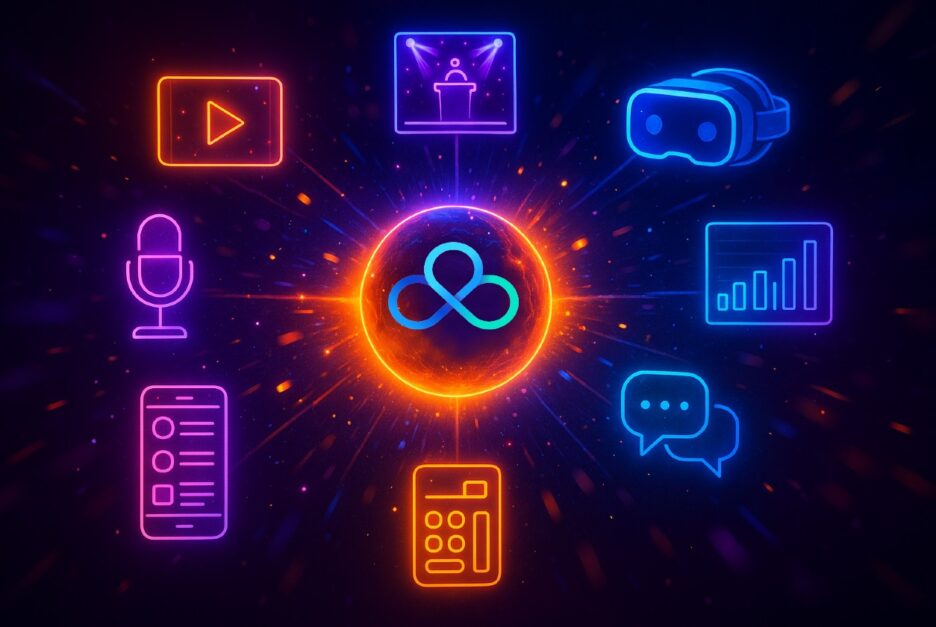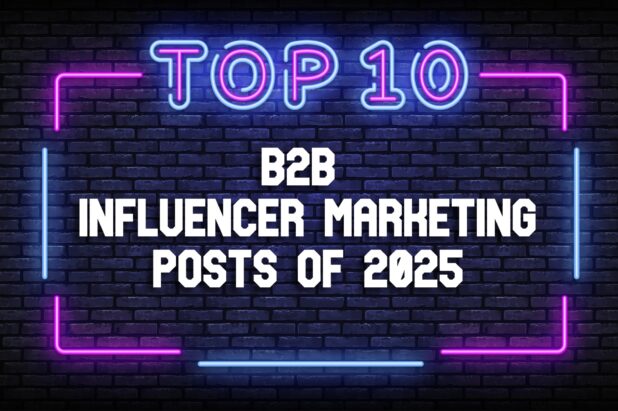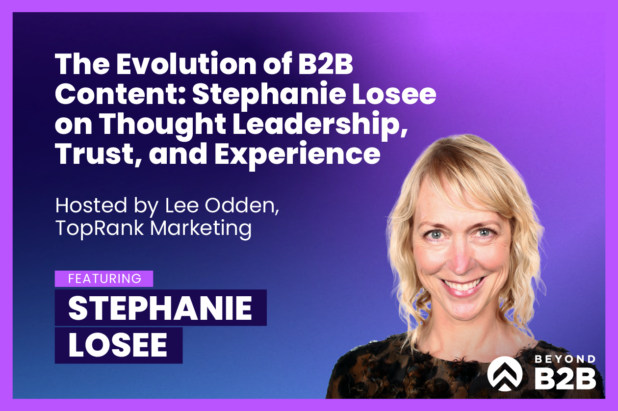In B2B marketing, we often fall into the trap of thinking business buyers are purely rational decision-makers who only want the facts. But here’s the truth: 66% of B2B buying decisions are influenced by emotional factors, 34% are influenced by rational factors (VML Inspire Study). And according to LinkedIn’s B2B Institute, inspiring emotion in B2B ads is 7x more effective than delivering rational benefits alone.
To put it simply, facts tell, but stories sell. And in today’s increasingly competitive, AI-powered, information overloaded world, telling your marketing story through experiences is what separates brands that are remembered from those that are ignored.
It’s time for B2B marketers to break free from mediocrity. B2B doesn’t need to mean “boring to boring”.
Simply providing useful information isn’t enough to satisfy today’s buyers. The table stakes for information discovery and consumption are much higher. To stand out and be remembered, B2B marketing needs to make buyers feel something. That feeling of trust, of inspiration and clarity creates the distinctiveness that embeds your brand in memory structures and make the buying committee shortlist before contact is even made.
Emotion, storytelling, brand – it all adds up through the experiences we create with our content. Beyond creating a better experience for buyers, this is also the kind of content that social media algorithms and AI search platforms are prioritizing. Those characteristics of being findable and meaningful are central to the Best Answer Marketing strategy.
Why experiential content matters more than ever
The data is clear:
- 64% of B2B buyers prefer a 100% digital buying experience with 30% using interactive tools, 30% attending virtual events, 29% viewing video ads. Gartner
- 76% of B2B marketers use videos, with video identified as the content format that produces the best results. Content Marketing Institute
- 78% of business owners listen to podcasts weekly Fame 91% of marketers plan to maintain or expand podcast/audio investments. HubSpot
- Webinars (55%) and in-person events (55%) were cited as distribution channels producing the best results. CMI
- 79% of marketers plan to increase their use of interactive content in 2025. HubSpot’s 2025 State of Marketing report
With the vast majority of business customers pulling themselves through the journey, experiential content captures attention through immersion, makes stories more memorable with multimedia formats, and delivers stronger impact by creating high-value experiences that build trust and drive results. On top of that, experiential content is more likely to be surfaced for complex, demonstration-based queries on GenAI platforms and Gemini powered Google search and may be favored in multimodal AI results.
Experiential content in the Best Answer Marketing framework
So what does experiential content mean in practice for B2B marketers? First, we must be data informed about what pain points and gaps exist for our ICP. From those insights we can identify the story opportunities to communicate how your brand and solutions are the best option (and answer) for what your customers need. An integrated strategy outlines what the story is, who can help tell the story, and the content formats and distribution channels for making sure that story becomes the best answer.
Experiential content formats include:
- Video: From livestreams and recorded explainers to customer storytelling and influencer interviews
- Audio: Podcasts that connect buyers through authentic conversations
- Interactive tools: Quizzes, ROI calculators, assessments, or interactive playbooks
- Virtual & in-person events: Conferences, webinars, demos, and roundtables with real-time Q&A
- Immersive technology: Gamification, VR, AR, and AI chatbots for personalized journeys
Leaning in to experiential content doesn’t mean leaving out traditional text based formats like reports, ebooks, blog posts, email and white papers. It means optimizing those formats for experience through the kind of relevance and emotion driving storytelling that builds a distinctive brand, inspires trust and decision making.
The role of AI in experiential content
One of the reasons experiential content is becoming more of an opportunity is the proliferation of AI-generated content, which is currently mostly text and images but AI-generated video creation by B2B brands is also increasing. Lack of sophistication with GenAI tools for content creation translates to mediocrity at scale. That said, AI literacy of users and platform capabilities are improving. But here’s the thing: even with improved tech and skills, AI isn’t replacing creativity when it comes to B2B content, it’s accelerating it.
A few ways B2B marketers are using AI to expand the utility and reach of experiential content:
- Conduct analysis of large amounts of data (CRM, analytics, SEO and social data, customer surveys, original research) to identify story opportunities
- Repurpose core narratives into multiple engaging formats (e.g., turn a research report into a video script, podcast outline, and interactive infographic).
- Personalize content experiences based on ICP segments
- Enhance production efficiency – converting long form video to shorts, social images, audio clips.
When it comes to AI and experiential content, the way to think about it is as a creative amplifier. As I’ve said before, when it comes to content, GenAI tools and platforms make you more of what you are. If you’re less inspired and creative and more focused on quantity, AI will most likely give you mediocrity. If you’re a more experienced and imaginative marketer that has also learned how to create context, prompts and workflows then GenAI platforms can be instrumental in scaling your human inspired content experiences.
A use case: How Best Answer Marketing helps build content experiences
Let’s imagine a cybersecurity company is launching a new solution. Here’s a simple example of how the Best Answer Marketing pillars can guide direction of experiential content development:
- Data-Informed: Research shows mid-sized financial services firms are most concerned about phishing attacks and insider threats. Audience research reveals these buyers spend time on LinkedIn, analyst reports, and security-focused podcasts.
- Integrated Strategy: The company aligns its goal (drive pipeline with financial services firms) to develop answer-topic narratives and story like “insider threat prevention” and “phishing defense.”
- Trust System: They partner with well-known CISOs as influencers, publish original research on phishing incidents, and activate customer advocates to validate their expertise.
- Experiential Content: These insights guide content choices:
- A livestream event with influencer CISOs and customer advocates discussing the research.
- An interactive phishing risk calculator on the company’s website.
- A podcast series featuring security leaders sharing prevention stories.
- Short video clips of customer testimonials amplified across LinkedIn.
Each content experience is an opportunity to build an emotional connection. In this scenario, buyers don’t just read about the solution, the story and formats help them experience the brand’s credibility, empathy, and authority.
Elevate Your Brand’s Content Experiences
Best Answer Marketing is about more than information
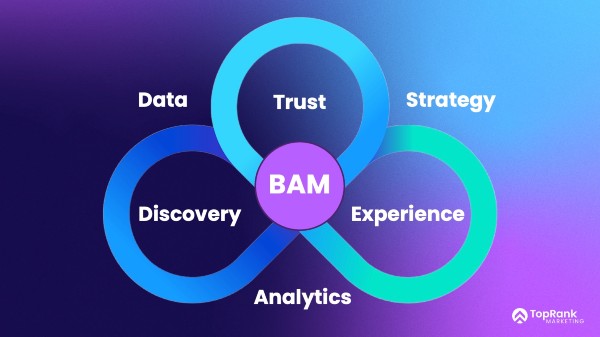
When B2B buyers are overwhelmed with options, the brands that win are those that create experiences worth remembering. Experiential content makes your brand the best answer not just because you provide the right information, but because you provide it in ways that resonate, inspire, and engage.
The first four BAM pillars: Data-Informed, Integrated Strategy, Trust System, and now Experiential Content all work together to give your brand clarity and credibility.
But even the best content experiences need to be found. In our next post, we’ll explore Multi-Channel Visibility which is at the heart of the Best Answer Marketing promise – to ensure your brand shows up everywhere your buyers are searching, engaging, and discovering the information they need to do business.
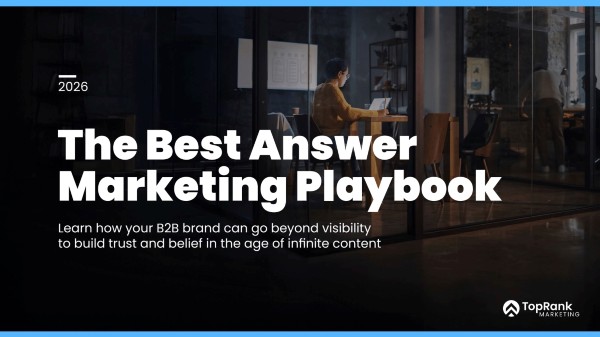
To get a PDF copy of the Best Answer Marketing Pplaybook, sign up below and we’ll send you a copy including best practices, research data, case studies, and a strategy checklist. PLUS access to our State of B2B Thought Leadership in 2026 Report.
